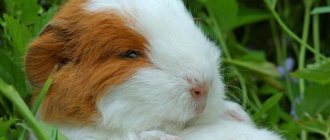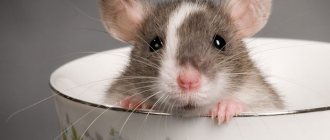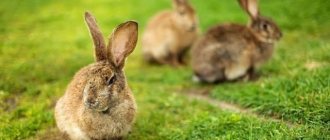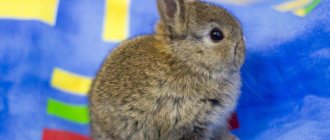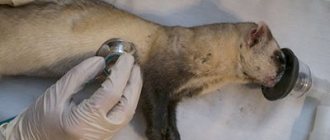The guinea pig has nothing to do with the sea; it doesn’t even really know how to swim. At first it was called overseas, but over time the name was replaced by a more modern one. Comes from South America. In our area, it can be considered an almost ideal pet. He is not capricious, requires minimal attention, eats little. Before purchasing a guinea pig, it is important to find out the price in your area. It can vary several times.
The cost of a guinea pig depends on the following factors:
- Breed;
- Age;
- Appearance and condition;
- Place of purchase, from hand or in a pet store;
- Region.
You can buy a guinea pig at most pet stores. Due to its small size, it does not interfere at all at home. The price of a pig in pet stores is 100–7000 rubles. But you can find it for free, just search the Internet on free classifieds sites. Often someone wants to give animals into good hands, but does not ask for anything in return.
The beauty of guinea pigs
According to many owners, the small guinea pig is practically devoid of shortcomings as such, although this animal is not for everyone. The main advantages include:
- Complete absence of aggression;
- Peace of mind at any time;
- Doesn't need a big house;
- Unpretentious;
- Doesn't bite;
- With proper care it does not leave odors;
- It is easily tamed and loves human affection and attention.
They reproduce easily, which breeders do not neglect. Guinea pigs are primarily kept as pets, but are also used for food. To date, more than 50 different breeds have been bred, each of which can be purchased. Due to the popularity of guinea pigs, owners hold many exhibitions and even seminars. Animals are ready to reproduce already in the second month of life. Thanks to their special friendliness, children love them very much.
Nutrition
How and how long guinea pigs live depends largely on how they eat. Properly and properly fed animals have shiny and beautiful fur, strong and healthy teeth and claws. In rodents deficient in vitamins and microelements, the coat thins and becomes dull. To prevent the fur from losing its shine and silkiness, it is recommended to include flax and sunflower seeds in your pet’s diet. Pigs tend to gain excess weight, so their diet should be moderate.
How to keep a guinea pig
Keeping a guinea pig is very simple and everything it needs is cheap. She does not need a large terrarium or cage, does not make unnecessary sounds, is unpretentious to food and is easy to keep. To ensure a comfortable stay in your home, it is enough to provide the basic needs:
- The high tray of the cage will protect the guinea pig from the wind and the room from debris.
- Sennik must be mandatory.
- A running wheel can be installed upon request.
- It is recommended to change the litter regularly.
- It is advisable to feed your guinea pig under supervision so that leftover food is removed in a timely manner. This is done so that it does not spoil, since products with signs of spoilage and mold are harmful to the animal.
- The drinker must be ball-shaped.
- Teeth grow throughout life, through which the animal experiences a constant need to grind them down. To do this, tree branches are placed in the cage.
When looking for the perfect pet, people often have to choose between her and a hamster. As a rule, both are bought for children. But the pig has one significant advantage: 10-20 minutes several times a day are enough for her to sleep. At the same time, the hamster is almost completely nocturnal and sleeps all day.
Arrangement of the cage
What size cage is optimal for kevi? Pigs are active, so they need at least 0.7 m2 of space for normal functioning. A cage without a ceiling is allowed if its walls are higher than 35 cm. The floor of the cage must be solid and not lattice, otherwise the animal may damage its paws. You should not put a kevi in a huge cage with several floors: the animal can fall from a high floor and damage its limbs. A paper bedding is laid out on the floor, which needs to be changed weekly.
You should definitely buy a house for your animal where you can hide and sleep. You need to put a feeder and a water bowl in the cage. It is also recommended to equip the cage with tunnels from which the animal will crawl out, swings and other interesting toys.
At what age should you buy a guinea pig?
It is best to buy a young guinea pig; the cost at a pet store will be higher, but you can get one from your own hands. At a young age, they will bring maximum positive emotions, and they will grow right before our eyes, along with the children. The older you buy, the cheaper it will be, but it will also last less.
For normal growth and development, the pig is fed hay, vegetables, fruits and herbs. They love salads made from vegetables and herbs. Make sure that the diet contains twig food. It is recommended to feed roughage; you can buy special compound feed, or wheat and oats, at a pet store. Your daily diet should contain sufficient amounts of vitamins and minerals. In winter, the body especially needs vitamin C. The average life expectancy at home reaches 5 years, with good care even longer.
We will consider the cost of a guinea pig using the example of two breeds, common and rare.
Care and maintenance
There are not many specific care requirements:
- pets need clean water, so it needs to be changed up to 5 times a day, as it gets dirty;
- food should include hay, root vegetables, green feed and grains;
- It is necessary to have solid food - twigs, they help to grind down constantly growing teeth;
- caring for the fur consists of lubricating it with cream if you notice signs of drying out and flaking;
- If the claws do not have time to grind down on the floor of the cage, they need to be trimmed.
Important! Pigs should not be given foods from the human diet - meat in any form, boiled vegetables, sweets. This may cause diarrhea.
Bathing and skin care
Swimming is not recommended for pigs, despite their name. If the rodent's skin is dirty for some reason, wipe it with a damp cloth.
If you cannot do without washing, then you need to consider that:
- the pig should not be placed under running water;
- water temperature – no higher than 30°C;
- water should not get on the animal’s head or ears;
- The shampoo is not applied to the skin, but diluted with water, wiping the contaminated area with this solution.
If you notice signs of dermatitis - irritation and redness of the skin, swelling - you should immediately contact a veterinarian to clarify the diagnosis and prescribe treatment.
You might be interested to know where the name “guinea pig” comes from.
Care of claws, teeth, ears
A rodent's teeth grow constantly and must also be constantly ground down. Try giving him different twigs, hay, and nuts to wear down his teeth. In case of diseases of the oral cavity - irregular shape or tilt of the tooth (bad bite), help can only be given to the mumps in a hospital. It is easy to notice such a pathology - the pet eats on one side or tries to eat carefully.
The claws should wear down naturally; if this does not happen, they are carefully trimmed once every 3 months. If you are not sure how to trim nails correctly, or have never done it, use the service of a groomer - this way you can see the correct trim and only then carry out the procedure yourself.
The ears are wiped with a cotton swab to prevent the formation of plugs. If a dark coating is noticeable in the pig’s ears during treatment and the pet begins to scratch its ears, this may be a sign of ear mites. In this case, you will need to treat it for parasites.
Did you know? In the central Andes, the Indians even had a special deity for guinea pigs - Paiginok. The deity was responsible for the reproduction of the cuy (Peruvian guinea pigs). The Peruvian Cui reaches a weight of 4 kg.
Cleaning the cage
The cage is cleaned at least once a week, replacing the bedding. It is also necessary to carry out disinfection along with cleaning to prevent diseases. The cage is wiped using a disinfectant solution - Dezinback or another preparation. The equipment is washed with soap and treated with boiling water.
Angora guinea pig - how much does it cost?
One of the most common breeds is the Angora; in a pet store such a pig costs 1000–2000 rubles. The price depends very much on the region. If the owner sells the animal, you can take it for 500–1000 rubles.
The cost of guinea pigs depends on age. When purchasing, pay special attention to this factor. If the price is too low, the animal may be elderly or sick. The Angora guinea pig has gained such high popularity due to its attractive long fur.
Coat care
You need to accustom your pet to grooming from a young age. At the pet store you should purchase:
- soft brush;
- wide-toothed comb;
- metal comb;
- small scissors.
Short-haired pigs know how to care for their coat without human help; they straighten and clean their coat with their teeth. The owner only needs to brush his pet twice a week with a soft brush to remove faded hairs.
Long-haired pigs have hair that gets matted all the time. Therefore, combing is carried out daily. If tangles have formed, they are carefully cut off with scissors. During lactation, females are advised to carefully cut off the fur around the nipples so that the babies can get to the milk. We also cannot help but talk about the amazing behavior of long-haired pigs. Animals act as hairdressers for themselves and their relatives: they independently cut out excess hair with their teeth. What causes this phenomenon has not yet been established.
Bald skinny guinea pig – price
The skinny guinea pig is a rare breed and is therefore much more expensive. Its uniqueness lies in the fact that before the age of one month it completely goes bald. In some places they are very rare, the cost can go up significantly. As a rule, a skinny pig costs between 3-4 thousand rubles.
When choosing this breed, be very careful, it requires special care. Wool is completely absent, due to which external factors have a serious impact on the body.
Bathing
When the fur becomes dirty, the pet needs to be bathed. A guinea pig can bathe in a basin or sink. The water in the basin should not be higher than 3 cm. For bath procedures, it is best to purchase an easily washable pet shampoo for rodents. The shampoo should be rubbed into the fur with soft, gentle, massage movements. After bathing, the animal should be protected from drafts. Is it possible to dry your pet with a hairdryer? It is possible, but only at the lowest power.
Also, do not forget about anal hygiene. In this place, animals often get stuck with particles of feces, hay, and dirt. Therefore, the owner needs to periodically clean the pet’s backside from accumulated dirt.
Breeding quality
There is such a thing as “breeding quality.” It concerns breeds and specific individuals intended for exhibitions. Conventionally divided into 3 classes:
- Show class - maximum compliance with the breed standard. Purebred representatives of the species. How much such a guinea pig costs depends on the severity of the breed of each individual. In most cases, it is this class that wins at exhibitions. The cost is very high, since few people agree to sell them. It takes a lot of effort and time to raise a purebred animal.
- Breed class - there is a slight deviation from accepted standards. Changes may be expressed in color or other features. Not suitable for exhibitions, but capable of producing show class offspring. Used for breeding.
- Pet class - a completely healthy individual, but with congenital or acquired defects. Not intended for exhibitions or breeding. Usually bought as a pet.
If you need an animal for an exhibition, the cost greatly depends on the class. In general, a guinea pig can cost from 500 to 5 thousand rubles or more.
Features of anatomy and physiology
The body of the rodent has a cylindrical shape. Body length, depending on the breed, ranges from 25 to 35 cm, weight - from 700 to 1500 g. With good nutrition and quality care, a guinea pig can live 7 - 15 years. Cavies are diurnal animals: they are active during the day and sleep for about 6 hours at night.
The length, structure and color of the coat are determined by the breed. The colors are impressive in variety; there are white, red, black, chocolate, fiery, cream and spotted individuals. Shedding in representatives of all breeds, even long-haired ones, is characterized by moderation, but occurs throughout the year.
The animals have an excellent sense of smell and sensitive hearing. Guinea pigs do not see very well, but they are able to distinguish certain colors and catch moving objects. Cavies' eyes are myopic, so the animals are not particularly visually oriented.
The skeleton of a guinea pig includes two hundred and fifty-eight bones. There are many bones, but they are fragile. The limbs of rodents are especially vulnerable; they often break during unsuccessful jumps.
Eye care
A healthy pig's eyes are fine: there is no inflammation, liquid or purulent discharge. The sore eye looks swollen, the cornea turns red, and mucus or pus appears. If such symptoms occur, you should urgently take your pet to the veterinarian.
Below is a list of eye pathologies that guinea pigs are prone to:
- microphthalmos;
- blepharitis;
- conjunctivitis;
- dermoid cyst of the eye;
- exophthalmos;
- corneal clouding.
Owner reviews
Naturally, high-end guinea pigs are inaccessible to ordinary buyers. In any case, if you plan to breed them, you should opt for purebred specimens.
Interesting to know! In our country, guinea pig breeding has not yet reached such a high level as abroad. Despite this, true connoisseurs of these animals try to acquire individuals that have an attractive and exotic appearance.
It should also be remembered that you cannot cross long-haired and short-haired representatives of the breeds, since the result will be offspring that are low-quality mestizos and no one will allow them to be shown at exhibitions. On top of that, crossing different breeds is also unacceptable because it hinders the improvement of the breed data of any of the species.
Guinea pigs have earned the right to be considered one of the most sought-after pets. Ease of care and maintenance is acceptable for everyone, even novice owners. This is an affectionate and sociable animal that is perfect for families with children.
